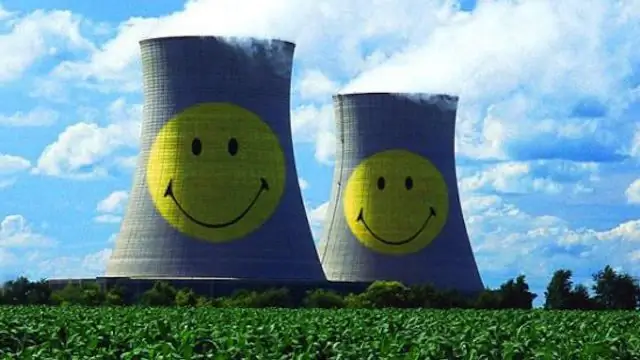2026 Author: Howard Calhoun | [email protected]. Last modified: 2025-01-24 13:10:47
Cement plants in Russia were mostly founded in the early years of the twentieth century. They were built quickly and were equipped with advanced equipment for their time.

Scientists and chemists have long struggled over the question of how to create building mixtures that, when saturated with water, would form rapidly hardening stone-like substances. Such a building material had to have a certain strength, quickly harden, and at the same time its price could not be high.
After the invention of Portland cement by Joseph Aspdin in 1824, it took over a quarter of a century for the material to be appreciated. The technology was based on the process of crushing lime rocks in combination with heat treatment.
The map of cement plants in Russia, both at the beginning of the 20th century and today, reflects geological data on the presence of chalk deposits (the so-called apoca). A completely logical consequence of this, and at the same time a very fortunate coincidence, is the fact that such raw materials are most often mined on the banks of rivers and seas. Therefore, in most cases, the transportation of finished products by water is not a problem.

An example of how cement plants in Russia developed is the enterprises of the city of Volsk, Saratov province. In 1897, the merchant Glukhov opened the production of building materials under the trademark "Partnership for the production of Glukhoozersky Portland cement", for the first time using such a modern technology as firing in rotary drum kilns. During the years of Soviet power, this enterprise was called "Bolshevik". The year 1912 was marked by the emergence of another player in the building materials market of the Russian Empire, the Saratov Joint-Stock Company.

The Russian-Swiss production of Pligin and Seifert opened in 1903. Soon the Swiss joint-stock company "Asserin" put into operation another cement plant. Photos stored in the local history museum of the city of Volsk recorded for history the moment of laying the foundation for production workshops.
So, in less than a decade and a half, a small county town has turned into an advanced industrial center with four factories loaded with orders for one hundred percent, and sometimes more. In the spring-summer period, seasonal workers were attracted, for whom the so-called barracks were built.
The quality of Volsky cement has always been the highest. It was he who was used in the construction of fortifications, and then in the construction of the Ostankino tower.
What is the secret of such intense interest in cement among the business community? First, the availability of high quality raw materials,to transport which from afar would be expensive. Secondly, a favorable investment climate. Doing business in our country before 1917 was as easy as in Europe or the North American States, which is why Russia's cement plants developed so rapidly.
What has changed since then? Unfortunately, a lot. Of the four factories, only one remained, the same Glukhoozersky Bolshevik. Of course, the sources of raw materials are partially depleted, but they will last for hundreds of years. Volga is in place. It is impossible to say that the sale of such an important building material has decreased. There are still no problems with personnel, including the highest qualifications. So what does it take to revive the best cement plants in Russia?
Recommended:
Solar energy in Russia: technologies and prospects. Large solar power plants in Russia

For many years, humanity has been concerned about obtaining cheap energy from alternative renewable resources. Wind energy, ocean wave tides, geothermal waters - all this is being considered for additional electricity generation. The most promising renewable source is solar energy. Despite a number of shortcomings in this area, solar energy in Russia is gaining momentum
Do I need to pay tax when buying an apartment? What you need to know when buying an apartment?

Taxes are the responsibility of all citizens. The corresponding payments must be transferred to the state treasury on time. Do I need to pay taxes when buying an apartment? And if so, in what sizes? This article will tell you all about taxation after the acquisition of housing
Nuclear power plants. Nuclear power plants of Ukraine. Nuclear power plants in Russia

Modern energy needs of mankind are growing at a gigantic pace. Its consumption for lighting cities, for industrial and other needs of the national economy is increasing. Accordingly, more and more soot from burning coal and fuel oil is emitted into the atmosphere, and the greenhouse effect increases. In addition, there has been more and more talk in recent years about the introduction of electric vehicles, which will also contribute to the increase in electricity consumption
The largest power plants in Russia: list, types and features. Geothermal power plants in Russia

Russia's power plants are scattered in most cities. Their total capacity is enough to provide energy for the entire country
Aeration plants: definition, types, principle of operation, production plants and do-it-yourself tips

Installation of the aeration column provides for the connection of a sump so that it has two flushing modes - direct and reverse. Combined use allows you to wash the filter element more efficiently. It is better to take a bigger mud trap. Small filters become clogged within a short time and require frequent rinsing. It is better to use a glass flask

